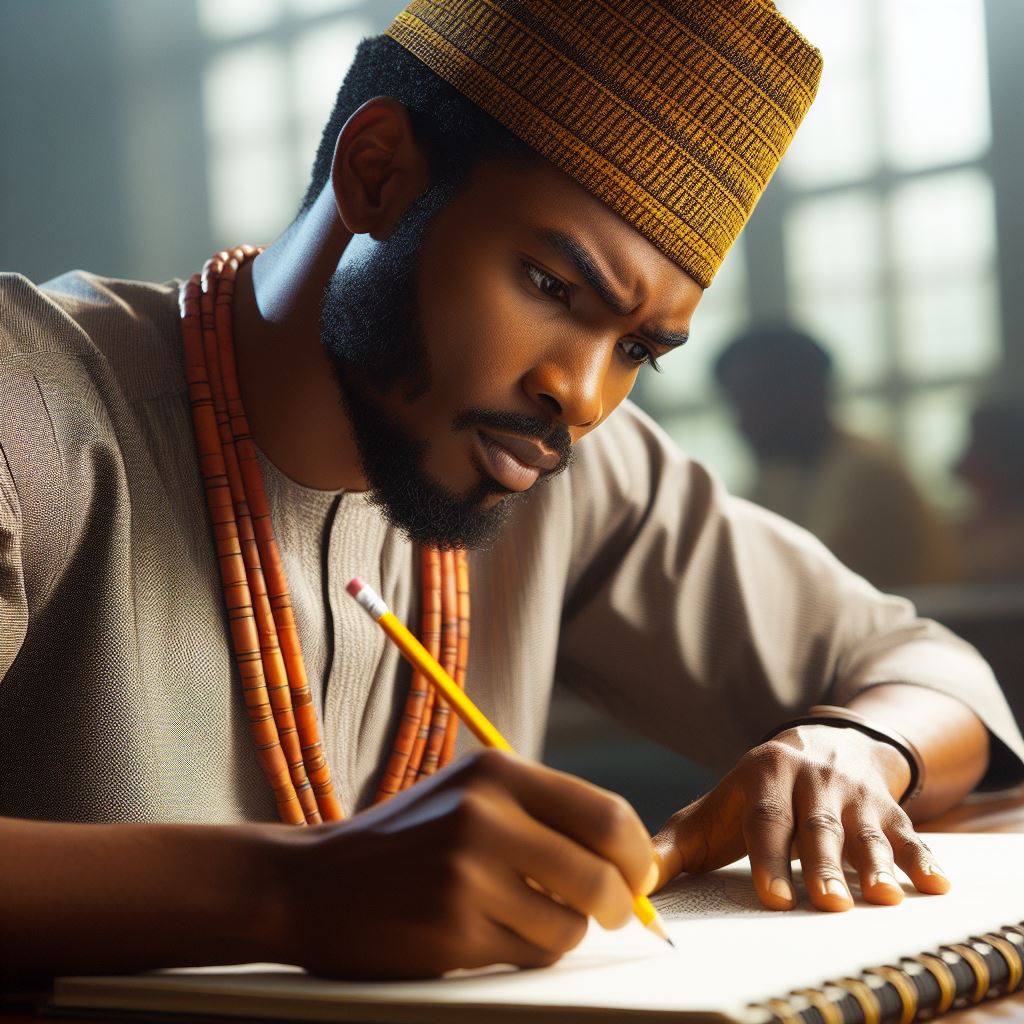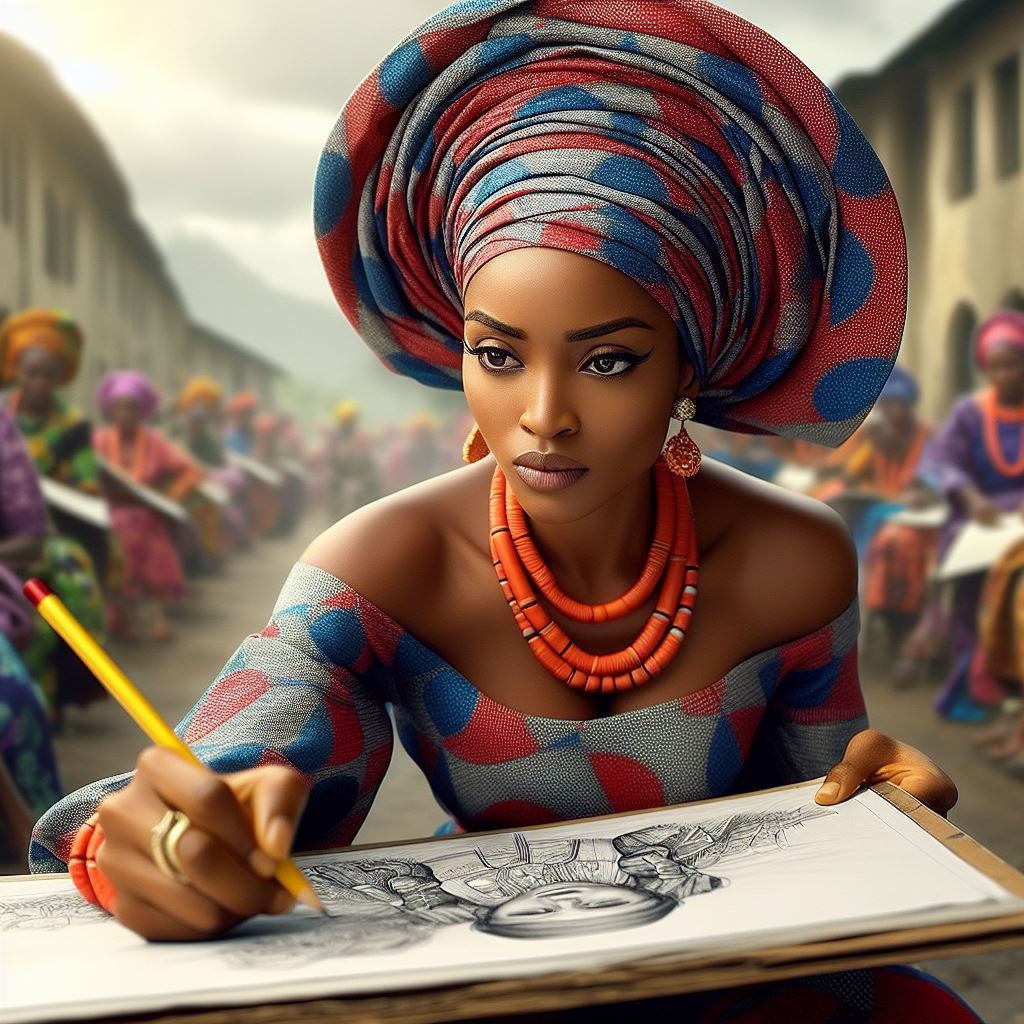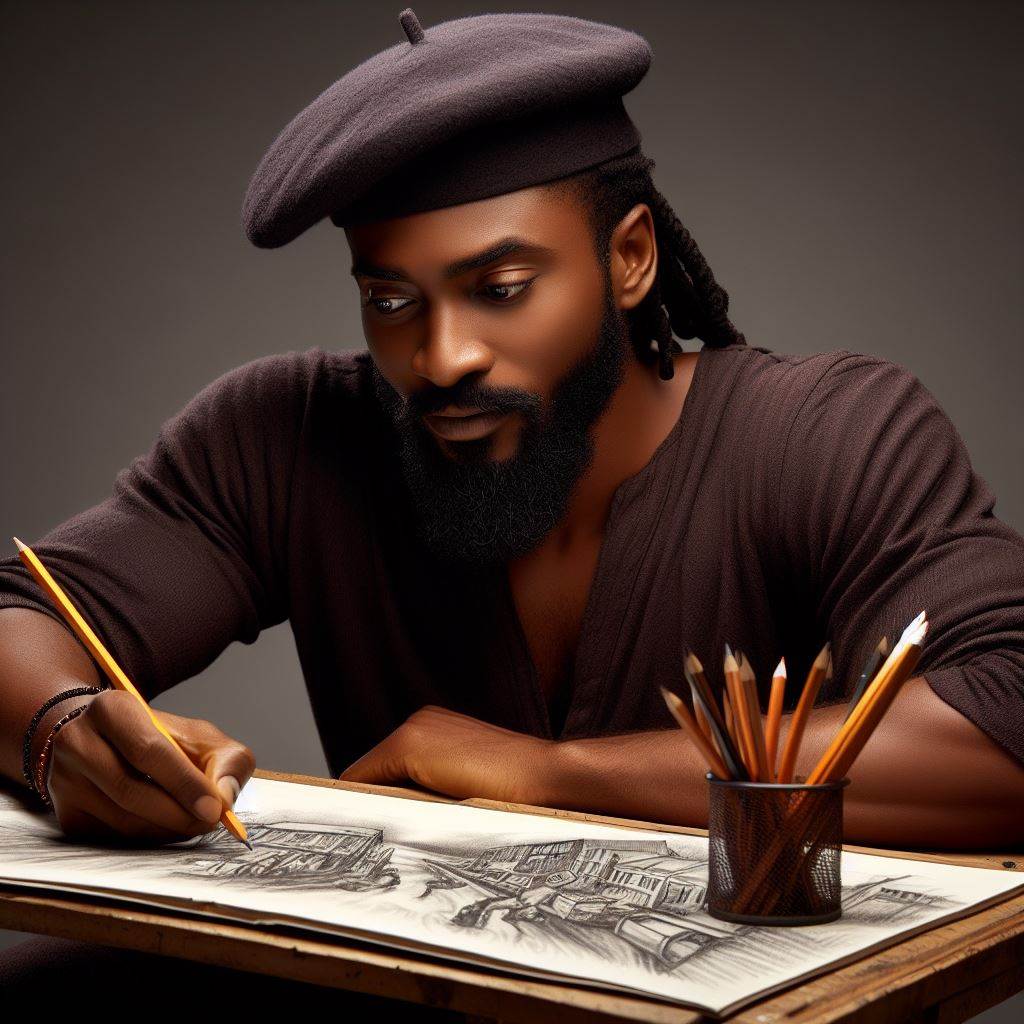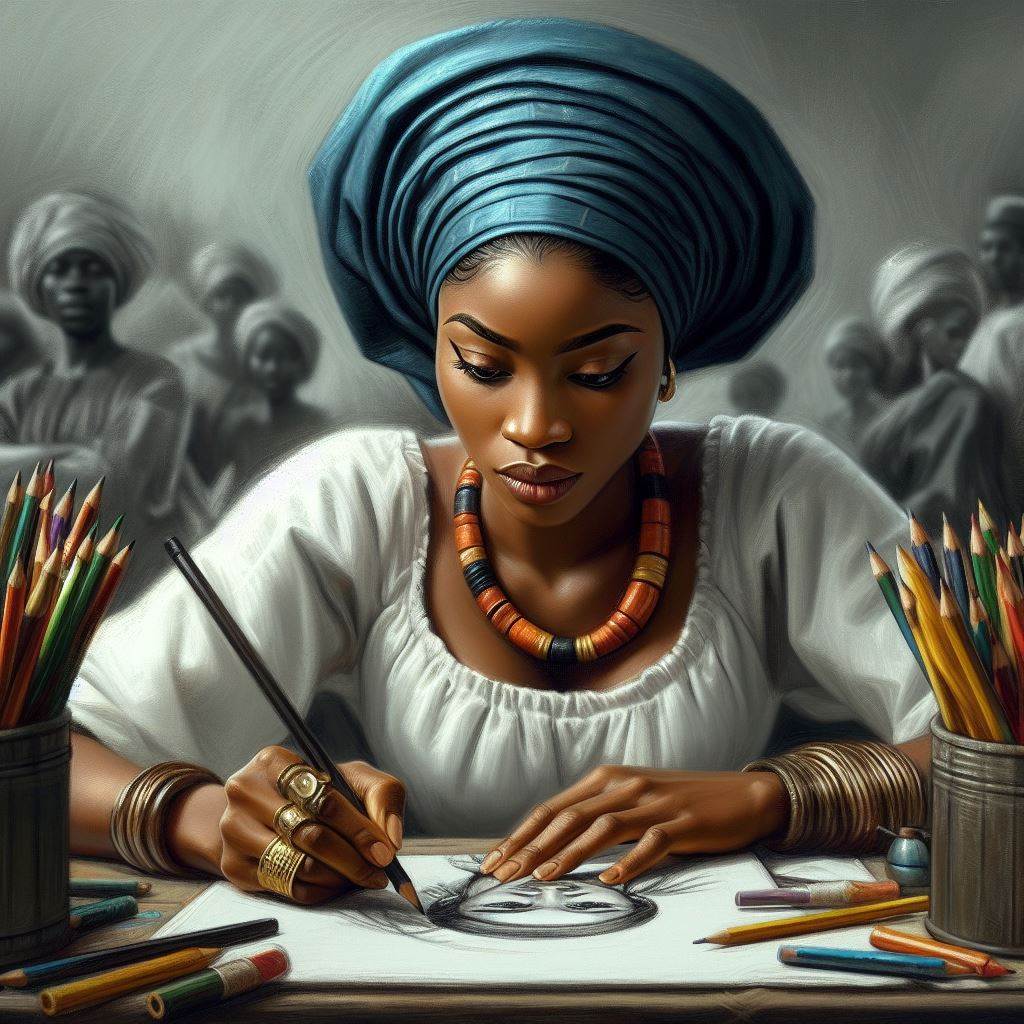Introduction
Art holds immense importance in Nigeria, serving as a vibrant expression of culture, heritage, and societal values.
From the ancient terracotta sculptures of the Nok civilization to contemporary installations, art has played a central role in shaping Nigerian identity and fostering creativity.
Throughout history, Nigerian artists have drawn inspiration from their rich cultural heritage, weaving intricate narratives through various mediums.
This artistic tradition continues to thrive in modern Nigeria, with artists exploring new forms of expression while staying rooted in tradition.
Nigeria boasts a thriving art scene, with bustling markets, galleries, and festivals celebrating creativity.
In cities like Lagos, Abuja, and Port Harcourt, art spaces buzz with activity, attracting artists, collectors, and enthusiasts alike.
This flourishing artistic landscape reflects Nigeria’s rich cultural diversity and its people’s passion for creative expression.
Transitioning from this comprehensive overview, let’s delve deeper into the fascinating world of famous Nigerian artists in fine and applied art, whose contributions have left an indelible mark on both the local and global art scenes.
Early pioneers of Nigerian art
Mention of influential artists like Aina Onabolu and Ben Enwonwu
In the annals of Nigerian art history, two towering figures emerge: Aina Onabolu and Ben Enwonwu.
Onabolu, often revered as the “Father of Nigerian Art,” was a pioneering force in the early 20th century.
His tireless efforts revolutionized the perception of art in Nigeria, advocating for its inclusion in formal education and promoting the appreciation of indigenous African art forms.
Ben Enwonwu, on the other hand, rose to prominence in the mid-20th century, captivating audiences with his unparalleled talent and vision.
Renowned for his mastery of both sculpture and painting, Enwonwu’s works transcended boundaries, earning him international acclaim.
His iconic sculptures, such as “Anywanu” and “Tutu,” are celebrated for their exquisite craftsmanship and profound cultural significance.
Their contributions to the development of Nigerian art
Onabolu’s advocacy laid the groundwork for the emergence of a vibrant art scene in Nigeria.
By championing the importance of art education and nurturing local talent, he paved the way for future generations of Nigerian artists to thrive.
Enwonwu, with his innovative approach and unwavering commitment to artistic excellence, further elevated Nigerian art onto the global stage.
Through his groundbreaking works, Enwonwu challenged colonial perceptions and asserted the cultural identity of Africa.
Impact on future generations of artists
The enduring legacy of Onabolu and Enwonwu continues to shape the trajectory of Nigerian art.
Their pioneering spirit and groundbreaking contributions serve as a source of inspiration for aspiring artists across the country.
By breaking barriers and pushing artistic boundaries, they have empowered future generations to explore their creativity and embrace their cultural heritage.
In museums, galleries, and classrooms, their works stand as a testament to the transformative power of art in shaping society and fostering unity.
As Nigeria’s artistic landscape continues to evolve, the influence of Onabolu and Enwonwu remains ever-present, reminding us of the indelible mark they have left on the canvas of history.
Their legacy serves as a beacon of hope and inspiration, guiding the next generation of Nigerian artists towards a future filled with boundless possibilities.
Read: Digital Media Trends in Communication Arts
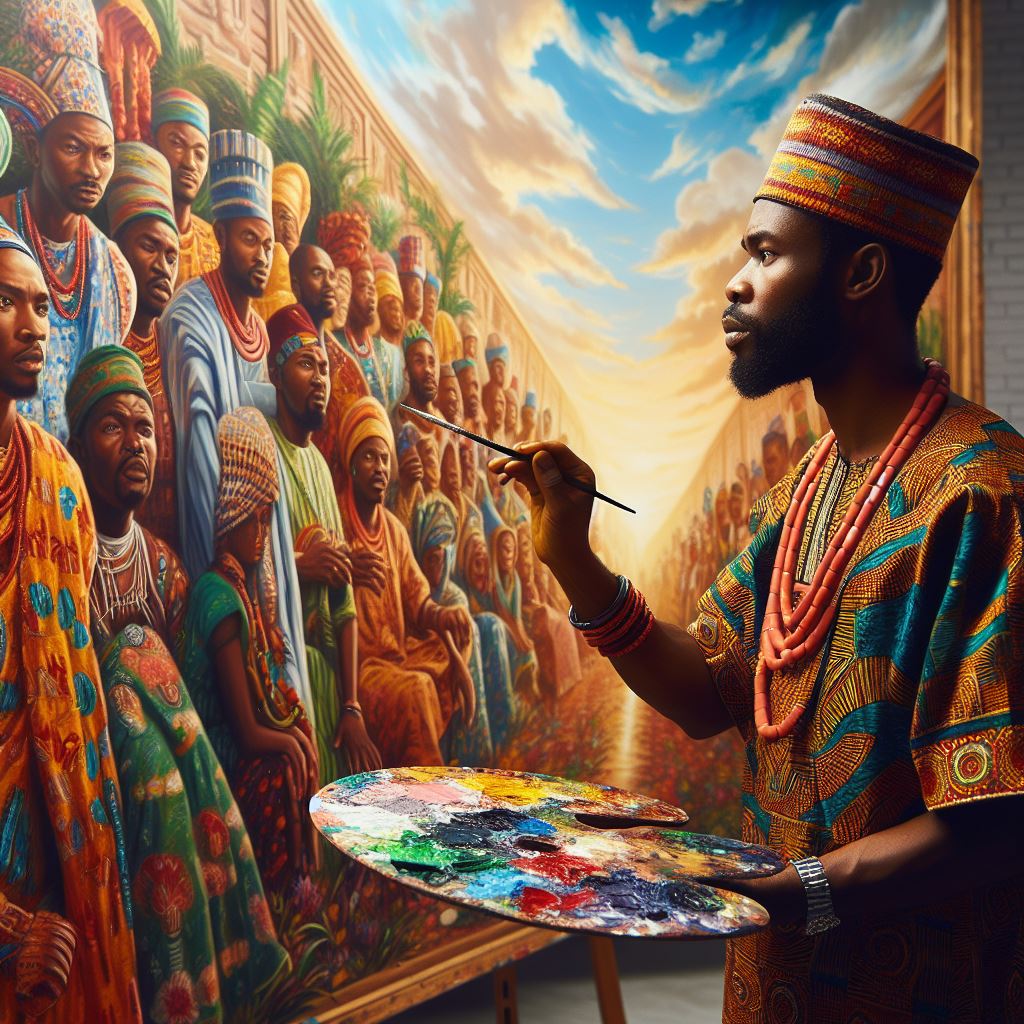
Contemporary Nigerian artists in fine art
- Peju Alatise: Known for her sculptural installations that address societal issues.
- Victor Ehikhamenor: A multidisciplinary artist blending painting, drawing, and sculpture in his works.
Exploration of artists like Peju Alatise and Victor Ehikhamenor
Peju Alatise and Victor Ehikhamenor are two contemporary Nigerian artists who have made significant contributions to the world of fine art.
Their unique styles and themes set them apart in the art world, showcasing the diversity and talent present in Nigerian art.
Analysis of their unique styles and themes
- Peju Alatise: Alatise’s work often explores themes of feminism, identity, and social injustice. Her use of mixed media and sculptural techniques adds depth and complexity to her pieces, inviting viewers to reflect on the human experience.
- Victor Ehikhamenor: Ehikhamenor’s artworks incorporate traditional Nigerian motifs and symbols, reinterpreting them in a contemporary context. His bold use of color and texture, combined with intricate details, creates visually striking compositions that captivate audiences.
Their significance in the art world
Both artists have gained international recognition for their innovative approaches to art-making and thought-provoking subject matter.
They have participated in numerous exhibitions and residencies, further solidifying their place in the global art scene.
Their work challenges conventions and pushes boundaries, shedding light on pressing issues in Nigerian society and beyond.
Peju Alatise and Victor Ehikhamenor serve as inspiring figures for aspiring artists, proving that Nigerian art has a powerful presence on the world stage.
Read: Communication Arts: Job Prospects and Salaries
Famous Nigerian artists in sculpture
Spotlight on artists like El Anatsui and Sokari Douglas Camp
In the realm of contemporary Nigerian art, two luminaries shine brightly: El Anatsui and Sokari Douglas Camp.
Their innovative works have captivated audiences around the world, leaving an indelible mark on the global art scene.
Their use of materials and techniques
El Anatsui, renowned for his monumental sculptures, employs discarded materials such as bottle caps and aluminum cans to create awe-inspiring tapestries that challenge perceptions of traditional sculpture.
Through his meticulous craftsmanship and innovative techniques, Anatsui transforms ordinary objects into shimmering, fluid compositions that explore themes of globalization, consumerism, and cultural identity.
Sokari Douglas Camp, on the other hand, is celebrated for her dynamic metal sculptures that fuse traditional African motifs with contemporary aesthetics.
Using techniques such as welding and metalworking, Camp crafts powerful pieces that explore themes of gender, politics, and social justice.
Her iconic works, such as “Battle Bus” and “Lady in Waiting,” evoke a sense of strength and resilience, reflecting the enduring spirit of the Nigerian people.
Impact on the global art scene
Anatsui and Camp’s groundbreaking contributions have had a profound impact on the global art scene, earning them widespread acclaim and recognition.
Their works have been exhibited in prestigious museums and galleries worldwide, sparking dialogue and inspiring audiences with their thought-provoking themes and innovative techniques.
Through their art, Anatsui and Camp have transcended cultural boundaries, bridging the gap between traditional African art and contemporary practice.
They have paved the way for a new generation of African artists to gain recognition on the international stage, challenging stereotypes and reshaping perceptions of African art.
In museums, galleries, and public spaces, their sculptures serve as powerful symbols of cultural exchange and artistic excellence.
By pushing the boundaries of artistic expression and challenging the status quo, Anatsui and Camp continue to inspire and empower artists around the world to explore new possibilities and push the limits of their creativity.
Read: Impact of Communication Arts on Nigerian Media
Notable Nigerian artists in painting
Examination of artists like Bruce Onobrakpeya and Yusuf Grillo
In the vibrant tapestry of Nigerian art, two prominent figures stand out: Bruce Onobrakpeya and Yusuf Grillo.
Their contributions have left an indelible mark on the Nigerian art scene, shaping its trajectory and influencing generations of artists.
Analysis of their influences and artistic visions
Bruce Onobrakpeya, a master printmaker and mixed-media artist, draws inspiration from traditional Nigerian art forms and cultural symbolism.
His works often explore themes of mythology, spirituality, and social commentary, blending traditional techniques with innovative approaches to create visually stunning and intellectually engaging pieces.
Yusuf Grillo, renowned for his striking figurative paintings and bold use of color, is celebrated for his unique blend of realism and abstraction.
Influenced by Yoruba culture and European art movements, Grillo’s works capture the essence of Nigerian life, conveying a sense of vitality and rhythm that resonates with viewers.
Recognition of their awards and accolades
Both Onobrakpeya and Grillo have received numerous awards and accolades throughout their illustrious careers.
Onobrakpeya’s contributions to the art world have earned him prestigious honors such as the Nigerian National Order of Merit Award, while Grillo’s work has been recognized with awards from institutions such as the Smithsonian Institution and the Society of Nigerian Artists.
Their accolades serve as a testament to the impact of their work and the importance of their contributions to Nigerian art.
Through their dedication, passion, and artistic vision, Onobrakpeya and Grillo have elevated Nigerian art onto the global stage, garnering acclaim and recognition from audiences around the world.
Essentially, the artistic legacies of Bruce Onobrakpeya and Yusuf Grillo continue to inspire and influence artists both in Nigeria and beyond.
Through their innovative approaches, bold visions, and unwavering commitment to artistic excellence, they have helped shape the trajectory of Nigerian art, leaving behind a rich legacy that will continue to resonate for generations to come.
Read: Internship Opportunities for Communication Arts Students
Celebrated Nigerian artists in photography
Focus on photographers like George Osodi and J. D. Okhai Ojeikere
In the realm of Nigerian photography, two luminaries stand out: George Osodi and J. D. Okhai Ojeikere.
Their captivating images offer a unique glimpse into Nigerian culture, capturing moments of beauty, resilience, and everyday life.
Examination of their iconic works and subjects
George Osodi’s photography often focuses on social and political issues in Nigeria, shedding light on topics such as oil exploration, environmental degradation, and socio-economic disparities.
His powerful images document the human impact of these issues, conveying a sense of urgency and empathy that resonates with viewers.
J. D. Okhai Ojeikere, on the other hand, is celebrated for his iconic portraits of Nigerian hairstyles.
Through his meticulous compositions and attention to detail, Ojeikere transforms everyday hairstyles into mesmerizing works of art, showcasing the creativity and ingenuity of Nigerian women.
Their contributions to documenting Nigerian culture
Both Osodi and Ojeikere have made invaluable contributions to documenting Nigerian culture through their photography.
Their images serve as a visual record of Nigeria’s rich heritage, capturing moments of joy, struggle, and resilience that define the Nigerian experience.
Through their lens, they offer a nuanced portrayal of Nigerian culture, challenging stereotypes and offering new perspectives on the country’s diverse communities.
Their photography serves as a bridge between past and present, tradition and modernity, offering viewers a deeper understanding of Nigeria’s complex and vibrant cultural landscape.
Generally, the photography of George Osodi and J.D. Okhai Ojeikere offers a powerful and evocative exploration of Nigerian culture.
Through their iconic works and subjects, they have documented the beauty, diversity, and resilience of Nigerian life, leaving behind a rich legacy that continues to inspire and captivate audiences around the world.
Renowned Nigerian artists in textile design
Designers like Nike Davies Okundaye and Ituen Basi
Nigerian textile designers have gained global recognition for their unique blend of traditional African motifs and contemporary influences in their designs.
Two of the most renowned artists in this field are Nike Davies Okundaye and Ituen Basi.
Analysis of their use of traditional motifs and contemporary influences
Nike Davies Okundaye is a Nigerian textile designer known for her use of Adire, a traditional Yoruba textile dyeing technique.
Her designs often feature intricate patterns and vibrant colors, reflecting her Nigerian heritage.
Okundaye’s work has been showcased in major galleries and museums around the world, showcasing the rich history and culture of Nigerian textiles.
Recognition of their impact on the fashion and design industries
On the other hand, Ituen Basi is a contemporary Nigerian fashion designer whose work has revolutionized the Nigerian fashion industry.
Basi is known for her bold and innovative designs that combine traditional African prints with modern silhouettes.
Her unique style has attracted a global following, with celebrities and fashionistas alike wearing her creations.
Both Okundaye and Basi have successfully bridged the gap between traditional African textiles and contemporary fashion, paving the way for a new generation of Nigerian designers.
Their impact on the fashion and design industries cannot be understated, as they continue to inspire and influence designers around the world with their creative vision and craftsmanship.
Nike Davies Okundaye and Ituen Basi made a mark in textile design, showcasing Nigeria’s cultural heritage through innovative creations.
Their work testifies to creativity’s power and art’s ability to transcend boundaries, uniting people from diverse backgrounds.
Uncover the Details: The Future of Film and TV Production in Nigeria
Influential Nigerian artists in ceramics
Spotlight on artists like Ladi Kwali and Ngozi Schommers
When it comes to ceramics, Nigeria boasts a rich history and a vibrant contemporary scene. Two artists, in particular, have made significant contributions to the field – Ladi Kwali and Ngozi Schommers.
Ladi Kwali
- Kwali, born in the early 1920s, is known for her pioneering work in traditional Nigerian pottery.
- She rose to international fame for her coil-built pots decorated with incised patterns and ridges.
- Kwali’s distinctive style blended traditional techniques with modern aesthetics, garnering praise from critics worldwide.
Ngozi Schommers
- On the other hand, Schommers is a younger artist who has been pushing the boundaries of ceramic art in Nigeria.
- Her work often features intricate sculptures inspired by Nigerian folklore and mythology.
- Schommers is known for her use of vibrant colors and innovative forms that challenge traditional notions of ceramics.
Both Kwali and Schommers have not only influenced the Nigerian art scene but also made a mark on the global stage with their innovative techniques and unique artistic visions.
Their innovative techniques and forms
One of the key aspects of Kwali and Schommers’ work is their innovative approach to ceramics.
Kwali’s coil-building technique, for example, involves hand-building pots using coils of clay rather than a potter’s wheel.
On the other hand, Schommers’ sculptures often combine hand-building and sculpting techniques, resulting in intricate pieces.
Both artists also experiment with glazing and firing processes, creating unique finishes that enhance the visual appeal of their work.
For instance, Kwali is known for using slip-trailing and burnishing techniques to create intricate patterns on her pots.
Overall, Kwali and Schommers’ innovative techniques revolutionized ceramics in Nigeria and inspired a new generation of artists.
Analysis of their cultural influences and significance in the art world
Both Kwali and Schommers draw inspiration from Nigeria’s rich cultural heritage, incorporating motifs, symbols, and narratives into their work.
Kwali’s pots, for example, often feature traditional Nigerian patterns and symbols, reflecting her deep connection to her cultural roots.
Schommers explores themes of identity, gender, and spirituality in her sculptures, drawing inspiration from Nigerian myths and legends.
Both artists significantly contributed to bringing Nigerian ceramics to the international art scene, showcasing its talent and cultural heritage.
Kwali, in particular, was instrumental in popularizing Nigerian pottery in the West, earning accolades and awards for her innovative work.
Overall, Kwali and Schommers’ cultural influences and significance in the art world cannot be overstated.
Their unique artistic visions, innovative techniques, and commitment to preserving Nigeria’s cultural heritage have cemented their influential status.
Gain More Insights: Mass Communication Ethics and Regulations Nigeria
Conclusion
In wrapping up, it’s important to acknowledge the profound diversity among Nigerian artists in both fine and applied art.
Their collective creativity spans a vast array of styles, techniques, and thematic concerns, reflecting the multifaceted nature of Nigerian culture and society.
Moreover, the impact of Nigerian art extends far beyond national borders, resonating on a global scale.
From vibrant paintings to intricate sculptures, Nigerian artists have captivated audiences worldwide with their unique perspectives and artistic visions.
Their works serve as powerful vehicles for cultural exchange and dialogue, fostering connections across continents and transcending linguistic and cultural barriers.
As we conclude, let us continue to celebrate and support the endeavors of these exceptionally talented individuals.
By actively engaging with their art, whether through exhibitions, patronage, or advocacy.
We contribute to the preservation and proliferation of Nigeria’s rich artistic heritage while also enriching our own lives through the beauty and insight their creations offer.

